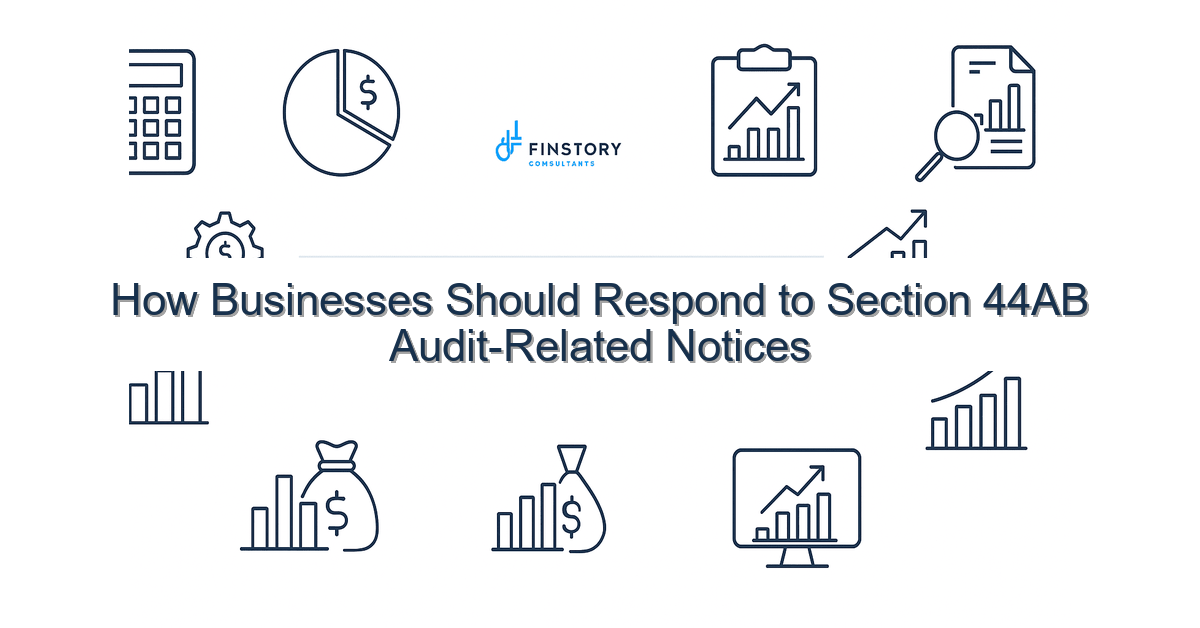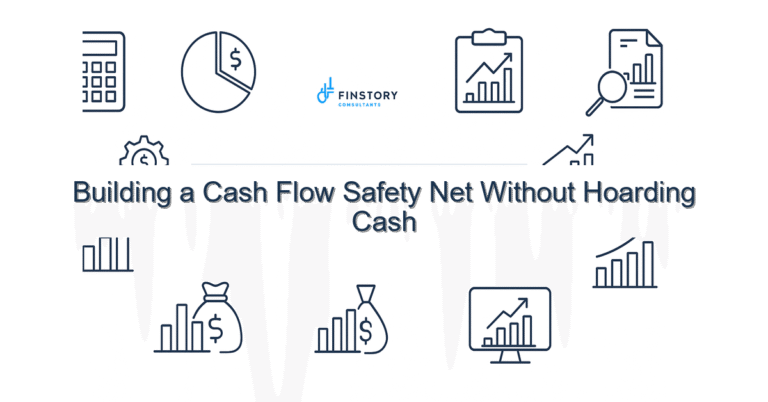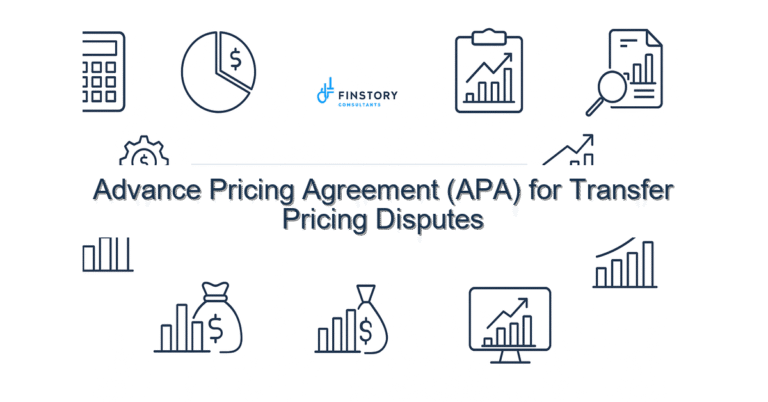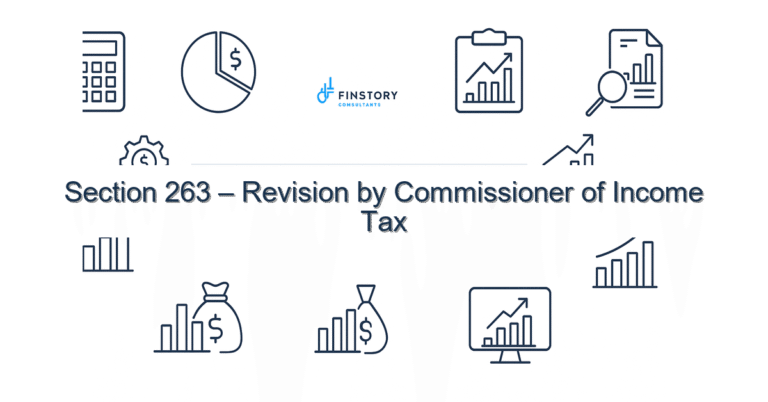How Businesses Should Respond to Section 44AB Audit-Related Notices
Getting an audit notice under Section 44AB can feel like a sudden emergency: confusing terms, tight timelines and the fear of penalties. You’re not alone—many salaried taxpayers, professionals, founders and MSMEs suddenly realise their books need to tell a clearer story to the tax officer.
Summary: If you get a Section 44AB notice, act fast: verify the notice, collect the right documents, reconcile AIS/26AS and TDS/TCS entries, consult a tax expert, and if needed, prepare for an audit or file a revised return. A structured response reduces penalties, speeds resolution and keeps your compliance record clean.
What’s the real problem in India?
Section 44AB requires certain taxpayers to get accounts audited by a Chartered Accountant. But the real challenge is the noise: AY/PY confusion, CBDT timelines, multiple notice formats, and mismatches between your books and the e-filing/AIS data. For small businesses and professionals, a first notice often highlights gaps rather than deliberate evasion. Understanding the forms, deadlines and how income tax india treats digital data is crucial.
- Symptom 1: You received a notice citing a different turnover figure than your books (often from TDS/TCS or AIS).
- Symptom 2: The notice deadline seems short and mentions audit reports or tax computation you don’t have ready.
- Symptom 3: Mismatch between ITR filed and AIS/26AS for a past year (maybe missed TDS/TCS entries).
What people get wrong
Common pitfalls escalate stress and penalties:
- Ignoring the notice or assuming it’s generic junk—never a good idea with CBDT communications.
- Panicking and sending half-baked documents—this often leads to follow-up notices or adverse assumptions.
- Treating AIS/26AS mismatches as trivial—TDS/TCS differences often trigger the whole issue.
- Thinking audit is only for large firms—thresholds change and professional incomes, presumptive schemes and capital gains indexation can pull you in.
A better approach
Responding properly is both tactical and procedural. Here’s a simple 4-step framework to follow:
- Verify the notice: Confirm AY/PY, notice date, portal link and the specific grounds (turnover, presumptive income, or mismatch).
- Reconcile records: Compare books, AIS/26AS, bank statements, TDS/TCS certificates and invoices. Identify the exact mismatch lines.
- Engage a CA early: A Chartered Accountant prepares the audit opinion or a factual response, and negotiates procedural issues with the assessing officer.
- Respond & document: File the reply on the e-filing portal, upload reconciliation schedules, and if audit is required, schedule the audit within the timeline.
Real-world example: A Bengaluru-based MSME received a Section 44AB notice citing higher turnover due to unclaimed TCS credits shown on AIS. A quick reconciliation revealed duplicate TCS credits from a supplier. The CA prepared a corrected statement and the issue was closed within six weeks—no penalty. Small fixes can save lakhs.
Quick implementation checklist
- Open the notice immediately and note AY/PY, reference number and the portal link.
- Download your AIS/26AS for the relevant AY from the e-filing portal.
- Pull bank statements, sales register, purchase register and TDS/TCS certificates for the period.
- Reconcile TDS/TCS: match each TDS entry in AIS/26AS to your Form 16B/Form 26QB/Form 16.
- If turnover is cited, compute turnover under Section 44AB thresholds and check if presumptive scheme vs books is causing mismatch.
- Contact your Chartered Accountant and share the notice + reconciliations within 3 working days.
- Prepare a concise reply (facts + documents) and file on the e-filing portal; keep proof of upload.
- If an audit is required, book the audit slot and gather ledgers, trial balance, and supporting vouchers.
- Consider filing a revised return if errors led to the notice (mind the ITR filing last date and penalty implications).
- Keep an audit trail of communications—emails, receipts, and portal acknowledgements—for future defence.
What success looks like
Measurable outcomes to expect after a systematic response:
- Lower or no penalty in the majority of cases where mismatches explain the notice.
- Faster closure of notice—weeks instead of months—when documentation is clear.
- Higher refund percentage or correct tax position after reconciling AIS/26AS and TDS/TCS entries.
- Reduced frequency of future notices due to improved bookkeeping and timely ITR revisions.
- Better banking and credit outcomes because financial statements are audit-ready.
Risks & how to manage them
Even with best efforts there are risks; manage them proactively:
- Risk: Penalties for non-compliance. Mitigation: Respond on time and obtain a CA opinion or representation.
- Risk: Adverse assessment due to missing invoices. Mitigation: Reconstruct records from bank, GST returns and supplier confirmations.
- Risk: Incorrect admission. Mitigation: Don’t admit facts without CA advice—responses can be used downstream.
- Risk: Multiple notices across years. Mitigation: Conduct a voluntary internal audit and file revised returns where justified.
Tools & data
Use these India-specific tools and data sources to speed response and avoid future notices:
- AIS/26AS from the Income Tax Department—your first source for TDS/TCS and reported credits.
- E-filing portal—download notices, file replies, and track status.
- TDS/TCS tracking tools and reconciliations in your accounting software (or Excel templates).
- Bank statements, GST returns, Form 26QB/16B/16—and capital gains indexation worksheets if sale of assets is involved.
FAQs
Q1: Who needs an audit under Section 44AB?
A: Businesses with turnover/sales above prescribed thresholds, and certain professionals with gross receipts above the limit. Thresholds change—confirm for the relevant AY. If in doubt, consult a CA.
Q2: What is the deadline to respond to a notice?
A: The notice itself states the timeline. Respond promptly on the e-filing portal. Also check ITR filing last date if the notice suggests a revision or late filing.
Q3: Can I ignore a mismatch shown in AIS/26AS?
A: No. AIS/26AS is a central record used by the department. Mismatches should be reconciled and corrected; often they are due to timing differences or unclaimed credits.
Q4: Will an audit always lead to extra tax or penalty?
A: Not necessarily. Many audits clarify records and close without additional tax if reconciliations explain the discrepancy—especially for MSMEs who cooperate and provide documentation.
Next steps
If you’ve received a Section 44AB notice, don’t delay. Start the reconciliation, gather your documents and speak with a Chartered Accountant. We help founders, professionals, salaried taxpayers and MSMEs prepare a calm, factual response that reduces risk and cost. For guidance on related matters—like claiming deductions under Section 80C limit, choosing between new vs old regime slabs, or ensuring TDS/TCS entries match your ITR—we can help.
Useful resources: [link:ITR guide] and [link:tax-saving tips] to get started on basic fixes and avoid repeat notices.
Work with Finstory. Speak with an Expert for a personalised plan to reduce your tax outgo and stay compliant. Book a free 20-min consultation.
📞 Need help with Income Tax in India?
Book a 20-min consultation with our tax team. Individuals, founders & MSMEs welcome.
Prefer email or phone? Write to info@finstory.net
or call +91 44-45811170.






